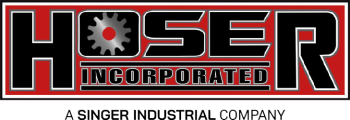You rely on hydraulic hose assemblies every day to continue your operations, serve your client base, and maintain your profitability. At the same time, hydraulic hose assemblies, while durable, only last for so long with consistent use. Here are just a few reasons why hydraulic hose assemblies fail, so you can be aware of ways to prevent premature failure.

- Tube Erosion—When hydraulic hose assemblies erode, external leakage often occurs. In most cases, erosion happens due to a concentrated amount of high-velocity steam or fluid existing within the hose. To prevent unexpected erosion, make sure you have the right hose size for your application.
- Dry/Aged Air—When exposed to dry or aged air, the inner tube of hydraulic hoses can begin to develop many tiny cracks. This type of damage can be difficult to recognize because when it occurs, the hose often remains flexible. Usually, this happens alongside external leakage, so watch out for that to prevent this issue.
- Minimum Bend Radius—If the minimum bend radius is not met, hose assemblies can fail quickly. At the same time, do not exceed the bend radius, as this can limit or restrict the flow of materials.
- Fluid Compatibility—External leakage and system contamination can both be results of fluid compatibility problems. In many cases, incompatible fluids will result in the inner tube of the hose deteriorating, swelling, and delaminating. The inner tube may also wear out partially in some cases.
